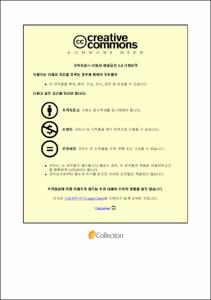Ulsan Univ. Repository
Thesis
General Graduate School
Materials Science & Engineering
1. Theses (Master)
Powder Bed Fusion 공정으로 제작한 Ti 및 Ti6Al4V 합금의 열처리 시간에 따른 미세조직 및 기계적 특성 분석
- Abstract
- 3D Printing은 ASTM F42 규정으로 영어로는 AM(Additive Manufacturing)이라 하며 한국에서는 적층제조공정이라 불린다. AM공정에는 총 7가지의 공정 방식이 있다. 각각 Vat Photopolymerization (PP), Material Extrusion (ME), Binder Jetting (BJ), Material Jetting (MJ), Powder Bed Fusion (PBF), Direct Energy Deposition (DED), Sheet Lamination (SL) 이다. 7가지 공정 중 정밀한 공정에 많이 쓰이는 방식은 PBF 공정이다.
PBF 공정은 항공우주, 자동차, 의료산업, 정밀화학산업 등 다양한 고부가가치 산업에 적용되고 있다. PBF공정에 대표적으로 사용되는 금속 재료로는 우수한 내식성을 가지면서 강도가 높은 티타늄합금, 우수한 전도율과 내식성을 가지는 알루미늄 합금, 강도, 연성이 높고 내산화성이 우수한 니켈 합금 그리고 스테인리스 스틸 등 Fe계 합금 등이 있다.
본 실험에 사용한 Ti grade 2는 882℃를 기준으로 온도가 아래면 α상, 882℃ 이상이면 β상이 존재하게 된다. 여기서 α상, β상의 양에 따라 Ti의 기계적 성질이 변하게 된다 TI계 합금 중 하나인 Ti-6Al-4V는 α상을 강화한 Ti-Al 계 합금에 β상 안정화원소인 V를 첨가한 합금이며, β상에 대해서도 고용강화를 시킴과 동시에 열처리효과를 준 대표적인 α + β 합금이다. 강도, 가공성이 높고 용접성이 좋다. 또한 열적 안정성이 양호하고 내열성이 우수하다는 장점이 있다. 또한 비중이 작아 가볍고 산화에 강해 부식이 잘 일어나지 않는다. 위와 같은 특징을 통해 Ti 및 Ti계 합금은 주로 항공우주산업에 적용되고 있으며 그중 산소, 질소, 탄소 등 불순물이 적은 ELI(Extra Low Interstitial)를 사용하여 국내에선 의료용 장비 및 임플란트 제작 등에 사용되고 있다.
PBF 공정이 다양한 산업에서 활용되려면 재료의 열처리 시간에 따라 달라지는 미세조직과 기계적 특성에 대한 연구가 많이 진행되어야 한다. 이번 연구에서는 PBF공정에 많이 사용되는 소재인 Ti 및 Ti계 합금을 사용하여 시편을 제조하고, 954℃로 열처리를 진행한 후 시간의 경과에 따른 미세조직 분석과 기계적 특성 분석을 같이 진행하고자 하였다.|Additive Manufacturing (AM) is the formal name of 3D printing and is classified as ASTM F42. It has a total of 7 process methods. Vat Photopolymerization (PP), Material Extrusion (ME), Binder Jetting (BJ), Material Jetting (MJ), Powder Bed Fusion (PBF), Direct Energy Deposition (DED) and Sheet Lamination (SL). Among them, usually the PBF have been using for high precision products.
The PBF process is being applied to a variety of high value-added industries, such as aerospace, automotive, medical and precision chemistry. In the PBF, various metal materials such as titanium (Ti) alloys with high strength and corrosion resistance, aluminum (Al) alloys with conductivity, nickel (Ni) alloys with ductility and Fe-based alloys like stainless steel etc usually have been used.
Ti grade 2 has α-phase when temperature is below 882℃, and β-phase when temperature is over 882℃. At this point, the mechanical properties of Ti grade 2 change depending on the amount of α-phase and β-phase.
Ti-6Al-4V, one of the Ti alloys, is an α+β alloy adds vanadium(V), a β-phase stabilizing element, to the α-phase Ti-Al alloy, and it has high strength, good processability, weldability, thermal stability and heat resistance. In addition, it has very excellent oxidation resistance. With these properties, the Ti and Ti alloys are mainly applied to the aerospace industry and in Korea, used ELI (Extra Low Interstitial) for manufacturing medical equipment and implants.
In order to use PBF process in various industries, a lot of research must be conducted on the microstructural and mechanical properties that depend on the heat-treatment times of the PBF samples.
In this research, the Ti grade 2 and Ti6Al4V was used to get PBFed samples having cubic shape with 10mmX10mmX10mm and 9mmX9mmX10mm respectively under various process conditions. And then, all samples were heat treated at 954℃ for 0, 0.5, 2, 5 hours. After heat treatment we analyzed the microstructural and mechanical properties to understand the relationship of the heat-treatment conditions.
- Issued Date
- 2021
- Awarded Date
- 2021-08
- Type
- Dissertation
- Keyword
- Additive Manufacturing; Powder Bed Fusion; Titanium
- Alternative Author(s)
- Seung Yun Song
- Affiliation
- 울산대학교
- Department
- 일반대학원 첨단소재공학과
- Advisor
- 김진천
- Degree
- Master
- Publisher
- 울산대학교 일반대학원 첨단소재공학과
- Language
- kor
- Rights
- 울산대학교 논문은 저작권에 의해 보호받습니다.
- Appears in Collections:
- Materials Science & Engineering > 1. Theses (Master)
- 파일 목록
-
-
Download
 200000507903.pdf
기타 데이터 / 43.18 MB / Adobe PDF
200000507903.pdf
기타 데이터 / 43.18 MB / Adobe PDF
-
Items in Repository are protected by copyright, with all rights reserved, unless otherwise indicated.